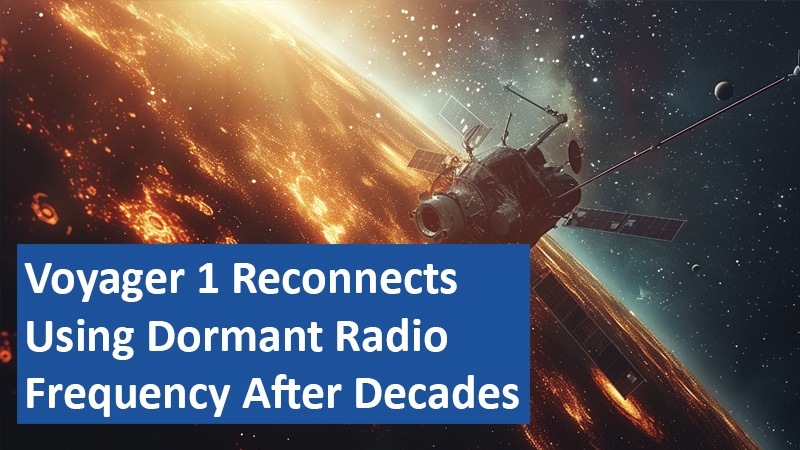Voyager 1, NASA’s furthest-traveling spacecraft, re-established contact after a brief communication gap by switching to a backup radio transmitter inactive since 1981. This unexpected signal, sent via a lower-frequency channel, allowed scientists to reestablish control, albeit on a weaker connection. The incident underscores both the resilience of the mission’s design and the challenges of maintaining communication over such vast distances.
By Sadie Watkins
An Unprecedented Journey Beyond the Solar System

Launched in 1977, Voyager 1 and its twin, Voyager 2, were originally tasked with exploring the outer planets by leveraging a unique planetary alignment that occurs only once every 175 years. Over the next 12 years, the two probes collected valuable data from Jupiter, Saturn, Uranus, and Neptune, providing unprecedented insights. After completing their primary mission in 1989, the probes continued their journey, venturing into the far reaches of the solar system and beyond. Now more than 10 billion miles away, Voyager 1 holds the record as the most distant human-made object from Earth.
A Surprising Break in Communication
In October 2023, Voyager 1 unexpectedly went silent, prompting concerns among NASA’s mission team. Commands sent to the probe received no response until scientists detected a faint signal on an old, low-power frequency known as the “S-band.” This frequency, used more than 40 years ago, transmits signals at a much weaker strength, making communication challenging at such extreme distances. Switching to the S-band also required less energy, an essential factor as the spacecraft nears the end of its power supply.
The Vital Role of the Deep Space Network
The Deep Space Network (DSN), a global network of large radio antennas, plays a crucial role in maintaining communication with distant spacecraft like the Voyager probes. Normally, Voyager 1 transmits data through a higher-power frequency, the X-band, allowing for clearer communication. However, after the X-band transmitter shut down, NASA’s engineers turned to the DSN to pick up the faint S-band signal. Despite the technical challenges, the network’s sensitivity proved invaluable, enabling scientists to resume monitoring Voyager 1’s status.
Redundancy in Spacecraft Design Shows Its Value
This recent event highlights the foresight of the Voyager mission engineers, who equipped the spacecraft with backup systems anticipating the potential for equipment failures decades later. Voyager 1 crossed the boundary of the heliosphere into interstellar space in 2012, becoming the first human-made object to do so. Although scientific measurements may cease by 2025 as power dwindles, communication with Voyager 1 could potentially continue into the 2030s. The mission exemplifies how thoughtful planning and redundancy can extend the life of deep space exploration efforts well beyond initial expectations.
As Voyager 1 nears the end of its mission, it serves as a reminder of the durability and ingenuity needed in space exploration.
Based on information from www.smithsonianmag.org and own research.